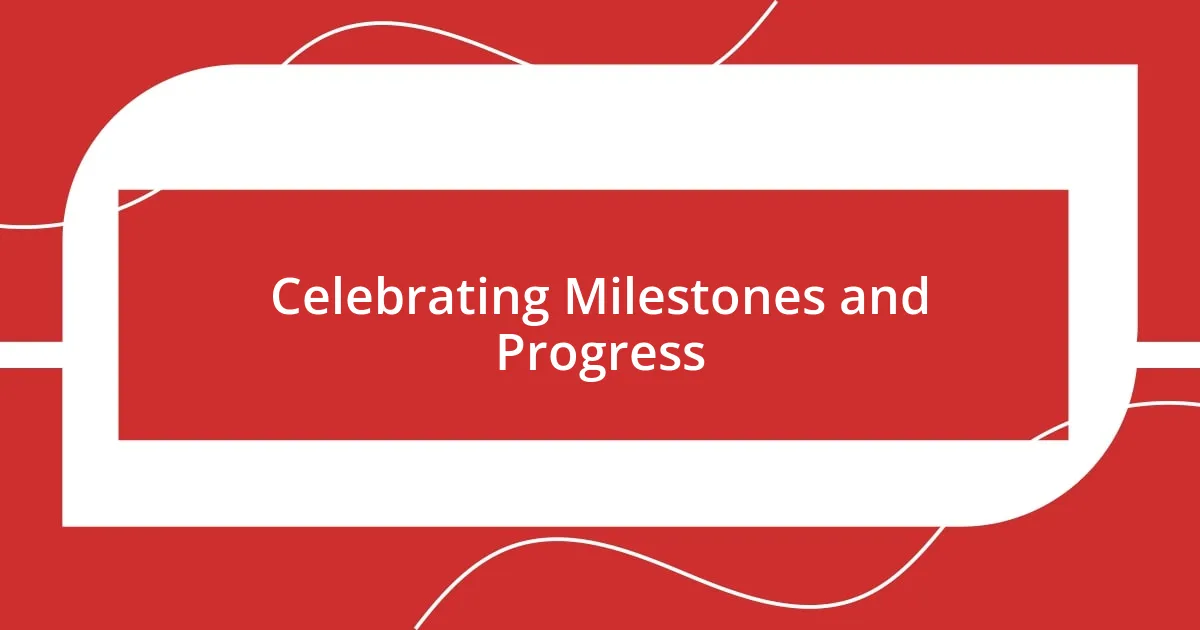Key takeaways:
- Running enhances mental clarity, boosts energy levels, and builds social connections through local groups.
- Establishing a daily running schedule involves setting specific times, distance goals, and allowing flexibility for rest days.
- Finding accountability through running buddies and social media support significantly increases motivation and commitment.
- Celebrating milestones and keeping a running journal can help track progress and maintain enthusiasm for running.

Understanding the Benefits of Running
Running isn’t just a form of exercise; it’s a powerful tool for mental clarity. I remember the days when a simple run would clear my mind, washing away the chaos of my thoughts. Have you ever felt that post-run high? It’s like everything just clicks into place, and suddenly, life feels more manageable.
The physical benefits are undeniable, too. I used to struggle with my weight, but I found that after committing to daily runs, my energy levels surged. It’s amazing how a seemingly simple act can lead to better sleep, increased endurance, and a sense of accomplishment each day. Have you thought about how running could impact your health journey?
Beyond the physical and mental perks, there’s something deeply social about running. Joining local running groups introduced me to wonderful people who share similar goals. The camaraderie is an unexpected delight—what could be better than bonding with others while improving your fitness?

Developing a Daily Running Schedule
Establishing a daily running schedule was my game changer. Initially, I found it challenging to carve out time, but I realized I needed to make running a priority. By setting a specific time each day—usually early in the morning—I created a routine that allowed me to consistently lace up my shoes and hit the pavement. I remember feeling a sense of accomplishment just knowing I had a plan in place.
To help structure my running schedule, I devised a simple approach that I still use today:
- Choose Your Time: Decide whether you’re a morning, midday, or evening runner and stick to it.
- Set Distance Goals: Start with a realistic distance and gradually increase it as you build endurance.
- Include Rest Days: Allow your body to recover; I learned the hard way that overdoing it only leads to burnout.
- Track Your Progress: Use a running app or journal to monitor your runs and celebrate milestones; this keeps motivation high.
- Stay Flexible: Life happens—if you miss a day, don’t be too hard on yourself. Just get back on track the next day!
I can’t tell you how freeing it felt when I allowed flexibility into my schedule while staying committed. This mix not only kept running manageable but also helped me develop a deep love for it over time.

Setting Realistic Running Goals
When it comes to setting realistic running goals, starting small can make a significant difference. Early on, I decided to focus on just running three times a week for 20 minutes. It felt achievable and, honestly, a little less intimidating. Gradually increasing my distance and time helped me build not only my physical endurance but also my confidence.
I remember setting my first mileage goal. I aimed for a 5K, but instead of trying to conquer it all at once, I broke it down into weekly increments. Each week, I allowed myself to feel proud for just hitting that small target. The sense of achievement I felt each time I reached a new milestone kept me motivated and reinforced that I was on the right path.
Visualizing my goals also played a crucial role. I created a vision board, placing it where I’d see it every day. It included quotes, images of my ideal running spots, and reminders of my “why.” Every time I looked at it, I felt a rush of motivation. It was like having a friend cheering me on to keep chasing that runner’s high.
| Type of Goal | Example |
|---|---|
| Short-term Goal | Run for 20 minutes, three times a week |
| Mid-term Goal | Complete a 5K within a specific time frame |
| Long-term Goal | Train for a half marathon in six months |

Finding Motivation Through Accountability
Having a running buddy transformed my approach to accountability and motivation. When I first started running daily, I found it easy to make excuses, especially on those chillier mornings. But once I committed to running with a friend, I knew I couldn’t let them down. I still remember the day we agreed to meet at dawn; the thought of disappointing someone else pushed me out the door when I’d otherwise hit the snooze button. Isn’t it amazing how much more likely we are to show up when someone else is counting on us?
Social media also played a pivotal role in my journey. I joined a local running group and started sharing my runs online. Seeing likes and comments from friends and fellow runners added a layer of accountability I hadn’t anticipated. I vividly recall posting a picture of my running shoes on a rainy day, captioned with, “Rain or shine, I’m getting my miles in!” The support I received motivated me to honor my commitment, while also fostering a sense of community.
It’s interesting how we often underestimate the power of shared goals. I found that participating in challenges, like logging my miles with others, sparked friendly competition. There were days when I felt too tired to run, but knowing others were matching or exceeding their miles pushed me to lace up my shoes nonetheless. Have you ever experienced that thrill of racing against friends, even if it’s just for fun? That rush of camaraderie makes all the difference, and soon, running became not just an obligation but a shared adventure.

Overcoming Common Running Challenges
When I first faced the challenge of finding time to run, it felt overwhelming. My schedule often seemed packed, and squeezing in a workout felt like a luxury I couldn’t afford. I remember one particularly hectic week where I decided to swap my lunch break for a quick jog. It was invigorating! I didn’t just return to my desk revitalized; I discovered that breaking up my day with a run made me more productive. Have you ever noticed how a little exercise can clear your mind?
Another common hurdle is dealing with the monotony of the same running routes. I used to dread the repetition, but I found that changing my scenery worked wonders. One day, out of sheer boredom, I explored a trail that wound through the park near my house. That simple shift made my run feel like an adventure rather than a chore. I experienced new sights and sounds, and that thrill kept me coming back for more. Isn’t it interesting how a fresh perspective can reinvigorate our routines?
Sometimes, motivation wanes, and that’s perfectly okay. I recall a period when the last thing I wanted to do was lace up my running shoes. Instead of letting that feeling fester, I started to embrace rest days. I allowed myself to recharge, knowing that time off could reignite my passion for running. Those moments of reflection taught me that balance is key; it’s about understanding our bodies and giving ourselves grace when we need it. Have you ever taken a break and returned feeling even stronger? It’s a reminder that resilience isn’t just about pushing through; sometimes, it’s about stepping back.

Celebrating Milestones and Progress
I’ll never forget the thrill of hitting my first 5K milestone. It felt surreal crossing that finish line, with cheering friends and family all around. In that moment, I realized the importance of celebrating achievements, no matter how small. Every step I took, every bead of sweat I wiped away, had led to this victory. Have you ever experienced a moment where your hard work truly paid off? For me, it was then that I promised myself to celebrate every milestone, helping to fuel my running journey even more.
Looking back, I started to keep a running journal to track my progress, which became a source of inspiration on tougher days. I’d jot down not just the distances but also my emotions, like the euphoria of completing a tough run or the satisfaction of reaching a new personal best. Each entry became a small celebration in itself. It’s fascinating how reflecting on those moments can reignite motivation. Have you tried documenting your journey? It’s incredible how seeing your progress in writing can stir up feelings of pride and readiness to tackle the next challenge.
I also discovered that rewards can be a game-changer in maintaining motivation. After finishing a challenging week of training, I’d treat myself to something simple, like a cozy night in with my favorite movie. It was about more than just a reward; it was a recognition of my hard work and dedication. Those moments filled me with joy and served as an acknowledgment that every milestone deserved a personal celebration. How do you reward yourself for your achievements? I’ve learned that these little victories and celebrations make the whole journey worthwhile.

Tips for Maintaining Running Routine
When it comes to maintaining a running routine, consistency is everything. I found that scheduling my runs just like any other important appointment made all the difference. For instance, I’d set a specific time each morning, and after a week or so, it felt more like a part of my daily ritual than an obligation. Do you have a time that feels more suited for you to run?
Another tip that worked wonders for me was finding a running buddy. Sharing those early morning jogs with a friend not only made running more enjoyable, but it also held me accountable. There were days when the idea of lacing up felt too daunting, yet knowing someone was waiting pushed me to show up. Have you ever thought about inviting someone along on your runs?
Lastly, it’s essential to listen to your body and adjust as needed. I remember when I pushed too hard during a particularly grueling week and felt an unexpected strain. Instead of pushing through the discomfort, I decided to take a lighter approach for a few days. Embracing that flexibility reminded me that running is not just about the miles; it’s also about longevity and how much I enjoy the journey. How do you balance your eagerness to run with the need to rest? It’s a dance we all can master.















